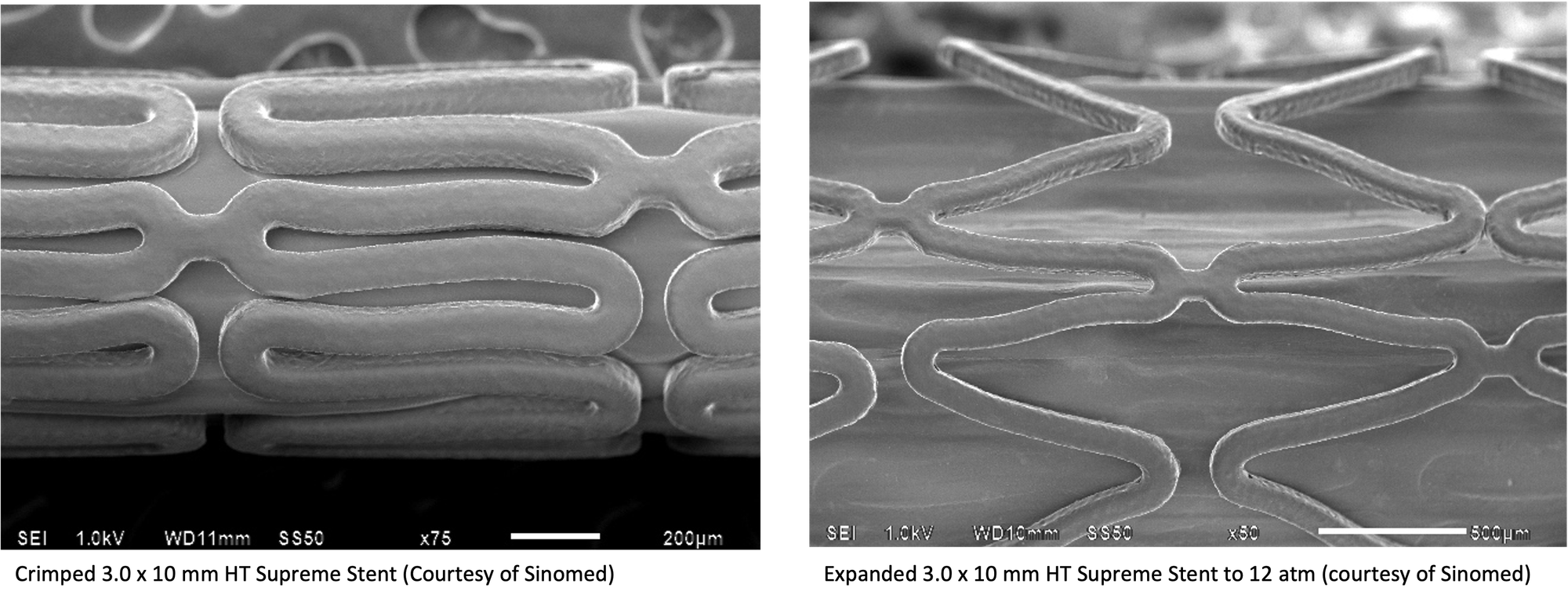Biod-eG™ layers

Most drugs used to inhibit the proliferation of Smooth Muscle Cells (SMCs) from which Neo-Intimal Hyperplasia (NIH) (from which restenosis originates), are not selective: they inhibit even better the migration and proliferation of Endothelial Cells (ECs) than SMCs, thus hindering the healing of the artery after Percutaneous Intervention (PCI).

AlchiMedics was among the first companies to use a biodegradable polymer coating to release the drug to secure full release of the drug over a relatively short period of time, at an era when all Drug Eluting Stents (DES) were made of biostable polymers. This release was targeted to match exactly the dynamics of the proliferation of SMCs, as a result of the inflammatory cascade following PCI.

Biodegradable polymers are brittle: we secure that they do not crack and delaminate during stent expansion thanks to an electro-grafted layer that can interpenetrate the biodegradable layer: this "interdigitation" provides excellent adhesion of the biodegradable polymer layer yet without any bonding between the eG™ layer and the biodegradable polymer. No reactive functional group is left behind when the polymer degrades, and the eG™ layer can play its pro-healing role.
This is what we call the Biod-eG™ layer.